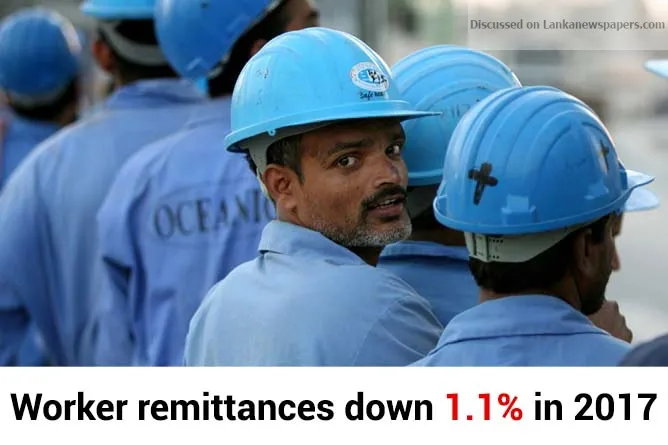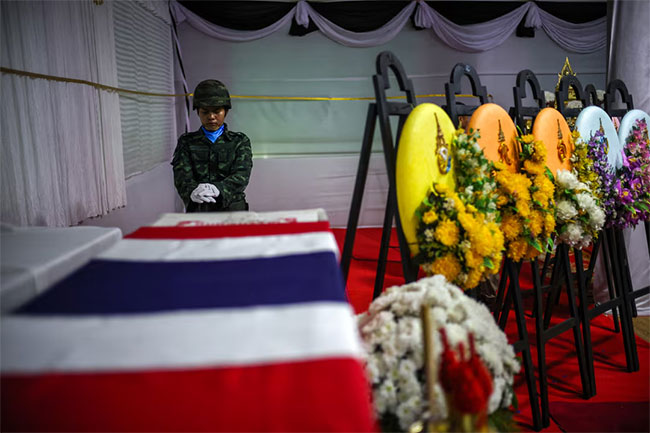
Worker remittances during 2017 declined 1.1 per cent to US$ 7.16 billion from US$ 7.24 billion recorded during the same period of 2016, as remittances in December declined for the fifth consecutive month this year. According to the Central Bank, remittances during December last year declined 1.9 per cent to US$ 671 million, from US$ 685 billion recorded during the same month in 2016. The Central Bank attributed the decline in remittances to slower growth in economic activities and adverse geopolitical conditions prevailing in the Middle Eastern region. Worker remittances have been Sri Lanka's largest foreign exchange earner and the country's balance of payment has been highly dependent on the income generated by migrant workers. The sector is also one of the largest employment providers to address the national unemployment and poverty issues prevailing in the country. According to the Ministry of Foreign Employment, Sri Lanka's total foreign employed workforce increased 26 per cent to 1,189,359 by December 2016 from 942,729 in 2015.The latest Fiscal Management report issued by the Ministry of Finance highlighted that the remittance inflow from housemaids had declined, while earnings......from mid-level and unskilled employment had increased during the past few years. With more employment opportunities being created in Sri Lanka under the present regime's vision, the Government is inviting expatriate workers back home to engage in more productive employment.Sri Lanka's unemployment rate during the third quarter of last year declined to 4.2 per cent from 4.5 per cent during the second quarter of last year and third quarter of 2016. (MA)
Popular News






